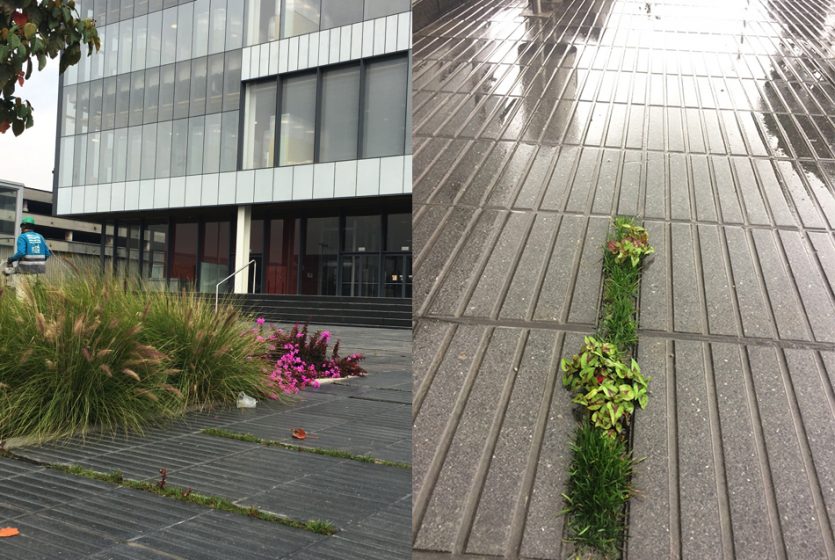Aesthetic perception forms in humans the desire to surround themselves with beauty. The main tenets of landscaping: aesthetic appearance, harmonious composition, and practicality. If you have decided to create the world around you and broadcast your vision of beauty through the design of green space, this area is what you need. Even those who first hear about the disciplines of landscape architecture and do not have a higher education related to design can strengthen themselves in this craft. You can learn anything if you have the desire and time. Even writing essays, which is usually difficult for students. If this is a problem, read tips for writing a perfect essay.
What is landscape design?
Landscape design is a visual language that allows you to work with natural media. If you look closely at a flower or a leaf from a tree, amazing symmetry immediately catches your eye. The language of flowers neatly arranges each vein like a line of a poem. But it is worth a little distance from the detailed consideration of the structural elements, and the picture of the landscape unfolds chaotically. Symmetry and asymmetry in landscape design create visual balance. Symmetry broadcasts a static image and requires close attention to detail. Meanwhile, asymmetry, which is dynamic and approximates the natural landscape, naturally organizes the site.
For a specialist in the field, it is important to understand the basics of space organization and master the tools of computer programs that will help visualize the green area. After numerous builds by hand and all sorts of sketches, the landscape designer masters the brushes of Photoshop and other graphic editors, learns to create 3D models, and designs their projects according to standards. And if you haven’t managed to master these programs yet, take advantage of the help of a freelancer with knowledge of a particular type of program. Freelancers and various online services are ready to help with anything, including writing a letter intent for medical schools.
What qualities should a landscape designer have?
In a new profession, imaginative thinking and the ability to convey an idea with the help of improvised tools are useful. Compositional balance, understanding of the work of light and color, the game of contrasts and nuances – all this comes with experience. According to the experts of get nursing essay service, the main thing, in this case, is taste and observation. As in any design, the creation of a new object begins with the basics of design: the first sketches. When the concept of the future landscape is outlined in general terms, you can go on to pre-project analysis and collect baseline data for the master plan.
At this stage, we begin to detail, placing on the site of existing and design objects. Here it is important to consider the measurement drawing, which becomes the basis of the entire design. What other drawings are there in the landscape design?
- Partitioning: it reflects all the measurements to scale and indicates landmarks, explaining the placement of objects on the ground with each other.
- Planting: helps schematically arrange hedges, trees, shrubs, and flowers for landscape design with the names.
When all drawings are ready, the project is completed with a vertical layout, arboretum plan, drainage system, storm drainage, lighting, and an explanatory note.
Features of the profession of landscape designer
A specialist must be not only a designer with excellent artistic taste but also a little gardener, engineer, architect, and botanist.
Let’s break down the requirements for professionals of this profile in order. A landscape designer must have an excellent understanding of plants:
- know which plants are good neighbors with each other, and which is better not to plant next to each other;
- to imagine the kind of plants in the long term, to understand how long it will take them to grow and how the garden will look like in a year, two years, five years;
- correctly calculate the distance between the plants: too close planting will prevent them from developing;
- to choose correctly the variants of figure pruning of bushes and trees;
- to know which plants can complement and decorate buildings (to wrap around columns, to create a “green roof” of a pergola);
- know the requirements for irrigation, nutritional conditions, lighting, etc., to choose the right planting place for each plant;
- take into account the time of flowering: the site should look great in May and September.
All of the above knowledge is useful to the designer still at the initial stage of site design, the development of the artistic concept. Often this knowledge has to be shared with the customer. Specialists must be ready to explain the reason why you can’t plant a beautiful exotic plant from a catalog, why you should not decorate the whole garden with roses of one variety if you want the blooming to be continuous, why to plant bushes so far from each other. Justify their decisions will have to work with private clients, and with government agencies. That is why the landscape designer needs to be tolerant, have the ability to explain complex professional decisions in simple language, the ability to communicate correctly, and be compliant.
Another important feature of the profession is seasonality. In the spring and summer, there are so many orders that a specialist or even a whole team can take only part of it. In the winter, many landscape designers are almost out of work. To earn well all year round, you can learn another direction in design and temporarily switch to it. Another option, for experienced professionals, is to work part-time in other countries where there are no cold winters.

